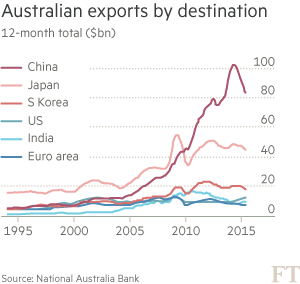I’ve just attended a one-day workshop on the rate of profit and crisis organised by Simon Mohun, Al Campbell and other Marxist economists as a prequel to the annual IIPPE conference taking place in Leeds over the next few days. And an excellent initiative it was too.
Simon Mohun, emeritus professor of economics at Queen Mary College, London, opened the first session with a presentation on Marx’s value theory and its relation to the capitalist accumulation process and Marx’s law of the tendency of the rate of profit to fall. Mohun started by making the key point that values equal prices in the aggregate. This is the ‘conservation principle’ that labour value equals prices in the whole economy, although at the level of individual commodities, price can vary from value. Indeed, the value of labour power (the socially necessary labour time taken to produce the commodities that workers consume in order to work) will not match the real wage (the price of labour). Prices of production of commodities vary from their value through competition among capitalists, leading to an equalisation of the rate of profit across an economy.
Under capitalism, the accumulation process is designed to increase the level of technique and the productivity of labour so that ‘relative’ surplus value rises (surplus value as a share of total new value). Increased productivity will lower the value of commodities as measured in labour time as the number produced rises in a fixed time period. So there are more use values and less exchange value – the great contradiction.
Mohun summed up Marx’s main assumptions or postulates as 1) capitalist accumulation leads to rising labour productivity; 2) real wages rise as the value of labour power cheapens; and 3) and there is usually a rising capital-labour composition. According to Mohun, these postulates may lead to a fall in the rate of profit but it is indeterminate (shades of Heinrich here).
Having previously pointed out that an explanation of a falling rate of profit based on rising wages was originally that of the classical economist David Ricardo and effectively refuted by Marx, Mohun seemed to accept that if real wages stay constant, then the rate of profit must rise. This latter point is the conclusion drawn from the so-called Okishio theorem that no capitalist would voluntarily introduce a new machine or technique unless it reduced the cost of production (labour costs) and raised profitability. So, according to Okishio, wages must rise before the rate of profit can fall. Mohun seemed to accept the theorem but argued that Okishio was refuted because, in reality, real wages have risen as the value of labour power has fallen, so Okishio is addressing the wrong issue.
Actually, Okishio is wrong anyway about the capitalist accumulation process, not Marx, as several authors, like G Carchedi (see Behind the Crisis p87-92 http://digamo.free.fr/carched11.pd), Andrew Kliman (see Reclaiming Capital, chapter 7) and others have shown. The Okishio theorem assumes a simultaneous change in prices of inputs to production and outputs – a physical impossibility in the reality of production over time. Investment is first, production second and realisation last. They can all be at different values or prices. Reality is temporal. In period one, capital is advanced for labour and means of production at a certain price or value. Then a new technique is introduced and the cost of production falls. Commodities are produced at a lower value or price BUT not the original investment. That was advanced at the older (higher) price. So the rate of profit can and will fall without a rise in real wages.
Moreover, using game theory and the ‘prisoners dilemma’, Mohun brilliantly showed why Okishio is wrong in practice. Marx’s argument was that, if one capitalist innovates to gain a higher rate of profit over others, eventually the others will be forced to innovate too, leading to an equalisation of the rate of profit at a lower level (as the organic composition of capital rises). Here is how I understood Mohun’s schema that shows why innovation under capitalism and competition can lead to fall in average rate of profit, contrary to Okishio.
There are two capitalists: A and B. Each starts with 3 in profit. If neither A and B innovate to reduce costs and boost profits, A stays at 3 and B stays at 3. But if A innovates and B does not; then A gets a higher profit (4) while B loses market share and gets only profit (1). Alternatively, if A does not innovate and B does, then A gets 1 and B gets 4. If both innovate, then A gets 2 and B gets 2. There is a drive to innovate because A or B can raise profit from 3 to 4. So there cannot be an agreement not to innovate, leaving A on 3 and B on 3. But if one innovates first to get 4, then the other must do so or its profit will fall to 1. But with both innovating, they both end up on 2 instead of 3 (if they had done nothing). So innovation boosts the individual profit of the leader but eventually when both innovate, the profit is lower. Again, this is over time. If A and B could simultaneously introduce the innovation (as Okishio assumes), then they may not do so, and stay at 3, rather than fall to 2. But that would not be reality. Reality is temporal.
Despite these arguments for Marx’s law of profitability, Mohun left us wondering whether Marx’s law is ‘indeterminate’ and so does not explain or show why the rate of profit will or must fall. Mohun also threw doubt on whether the rate of profit has actually fallen in reality. Mohun pointed out the huge difficulties in measuring the rate of profit a la Marx from official statistics and we don’t have much more than the US or the UK to work on. And Mohun left open the question of whether Marx’s law related in any way to crises.
Actually, Mohun himself has done excellent empirical work on the UK rate of profit in the inter-war period and more recently delivered a super paper on measuring the share of wages and profit in the US economy (ClassStructure1918to2011wmf.) Indeed, I’d like to think that some of us have made progress on the calculation issues and also in looking at profitability of capital globally beyond the US. In that latter regard, I have done work on a world rate of profit and even more recently a study of the UK rate of profit over the last 150 years (UK rate of profit August 2015). And don’t forget the sterling work done by Esteban Maito on a world rate of profit based on 14 countries. Next year, G Carchedi and I will publish a book containing the work of several young scholars who have measured the rate of profit in many countries globally. These analyses will give renewed support to the relevance of Marx’s law of profitability. Work is being done empirically.
John Weeks, eminent emeritus professor of economics at London’s SOAS university and author of many great books on Marxist economic theory took up the issue of the causal process between Marx’s law of profitability and crises. He presented a flow chart that showed various possible outcomes (John Weeks handouts-1 (1)). Weeks said we needed to define exactly what we meant by a crisis – which he reckoned was a significant sharp fall or contraction in output. This is a point he made in a recent paper and I agree with him there. If that is the definition of crisis, then Weeks reckoned there have been only three capitalist crises: the 1880s, 1930 and now. I prefer to call these depressions and have outlined before the difference between ‘normal slumps’ and depressions.
But be that as it may. As far as I could see, Weeks did not reach a conclusion about how Marx’s law could lead to crises, as he defined them. You see, for Weeks, just a small fall in profitability cannot cause a crisis. It needed to be big and long-lasting. So, according to Weeks, we don’t have any proof of a connection between profitability and capitalist crises. Well, actually, several authors have done just such work on the connection between profitability and growth in the post war period. And G Carchedi has recently published a new paper showing the close connection between a change in new value (a fall) and recessions. And I have raised the work of Tapia Granados on the causal connection between profits and investment in my blog on numerous occasions. Apparently, all this has passed Weeks by.
Professor Alfred Saad-Filho, also at SOAS , then presented the workshop with a comprehensive history of the various interpretations of Marx’s crisis theory: overproduction (Engels-Kautsky); underconsumption (Luxemburg, Sweezy) disproportion (Tugan-Baronovsky,Hilferding) and the tendency of the rate of profit to fall (proponents of which he called ‘fundamentalists’ of a somewhat sectarian nature!). For Saad-Filho, we needed to get away from adopting one interpretation of Marx’s incomplete crisis theory over another. They were all in Marx at some point. What we needed to do was integrate or synthesise them into one comprehensive theory to explain capitalist crises. This still needs to be done, according to Saad-Filho. But he did not provide any guide or show any progress on how to do this, except to present his own version of ‘financialisation’ as the cause of the current ‘neoliberal’ crisis.
Indeed, that appeared to be the conclusion I draw for the day as a whole. I learnt about Marx’s value theory and the law of profitability; I learnt about the need to show how it connected or led to crises; I learnt how Marxists before have adopted all sorts of explanations for crises that have proved to have significant faults. But if this workshop is any guide, Marxist economics has not reached any definitive conclusions on these issues. We don’t seem to have progressed much in delivering a coherent Marxist theory of capitalist crises since Marx died.
Actually I beg to differ: I’d like to think we have made progress, especially recently and even to the point of making predictions. Still the workshop was very good. We need more.




























